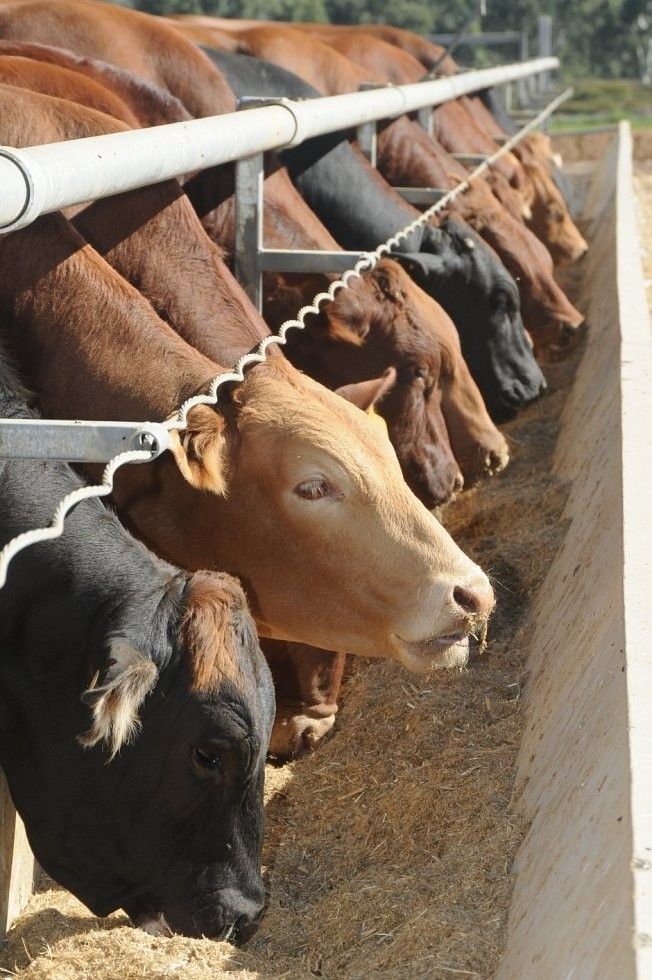Feedlot farming, also known as intensive or confined feeding operations, plays a crucial role in global feed security. Here are some key points to understand the significance of feedlot farming in ensuring an adequate supply of feed for livestock:
- Increased Production Efficiency:
Feedlot farming allows for the efficient production of meat, milk, and other animal products. Compared to traditional extensive grazing systems, feedlots can maximize the use of feed resources by confining animals in a controlled environment. This results in higher feed conversion rates and faster growth rates, allowing for increased production of animal protein to meet the growing global demand.

- Consistency and Predictability:
Feedlot farming provides a more consistent and predictable supply of animal feed throughout the year. By relying on formulated diets and controlled feeding practices, feedlot operators can ensure that animals receive a balanced and nutritionally optimized diet consistently. This reduces the dependence on seasonal variations in forage availability and allows for a more stable production of animal products.
- Resource Optimization:
Feedlot farming allows for the efficient utilization of land, water, and other resources. Compared to extensive grazing systems, feedlots require smaller land areas to produce the same amount of animal products. This helps minimize the pressure on agricultural land and allows for the preservation of natural habitats. Additionally, feedlots employ technologies and management practices to optimize water and nutrient use, reducing environmental impacts.

On the other hand, our company can help you to start by giving you all the necessary information you need to get started if not yet in the business. Please check our online shop, we have all the standard business proposals for different capacities at very a cheap price made by the best agricultural specialists as well as Standard design plans that are made by the best agricultural architects around the globe. please visit our online shop now using the links below to witness by yourself
Design plans (FARM HOUSE DESIGNS – Kimd Construction & Farm Consultants)
Business plans (BUSINESS PLANS & PROPOSALS – Kimd Construction & Farm Consultants)
Welcome back from visiting our shop, hope you have placed your order for any of our products or you can place it after navigating more of our informative articles.
So let’s continue with our article!
- Addressing Feed Shortages:
In regions where forage availability is limited, feedlot farming can help bridge the feed gap. By relying on formulated diets that include a combination of grains, by-products, and other feed ingredients, feedlots can utilize alternative feed sources that are not suitable for direct human consumption. This reduces competition between animal and human food systems and helps alleviate feed shortages, especially in areas with high population densities.

- Value-Adding to By-Products:
Feedlot farming provides a market for various by-products from the food and agricultural industries. By incorporating these by-products into animal diets, feedlots contribute to reducing waste and increasing the overall resource efficiency of the food system. Examples of such by-products include grain milling residues, oilseed meals, and food processing by-products.
- Enhanced Food Security:
The efficient production of animal protein through feedlot farming contributes to global food security. Animal products, such as meat and milk, are important sources of high-quality protein and essential nutrients. By increasing the availability of these products, feedlot farming helps meet the nutritional needs of a growing population, particularly in regions where alternative protein sources may be limited.
- Collaboration and Knowledge Sharing:
The feedlot farming industry plays a vital role in knowledge sharing and collaboration. Feedlot operators, researchers, and industry stakeholders work together to develop best practices, improve animal nutrition, and implement sustainable production systems. This collaboration helps drive innovation, enhance productivity, and address challenges related to feed security on a global scale.
However, it is important to recognize that feedlot farming also presents challenges related to environmental impacts, animal welfare, and sustainability. It is crucial for the industry to adopt responsible and sustainable practices that minimize negative impacts and ensure the long-term viability of feedlot farming as a contributor to global feed security.
Sharing is caring!




